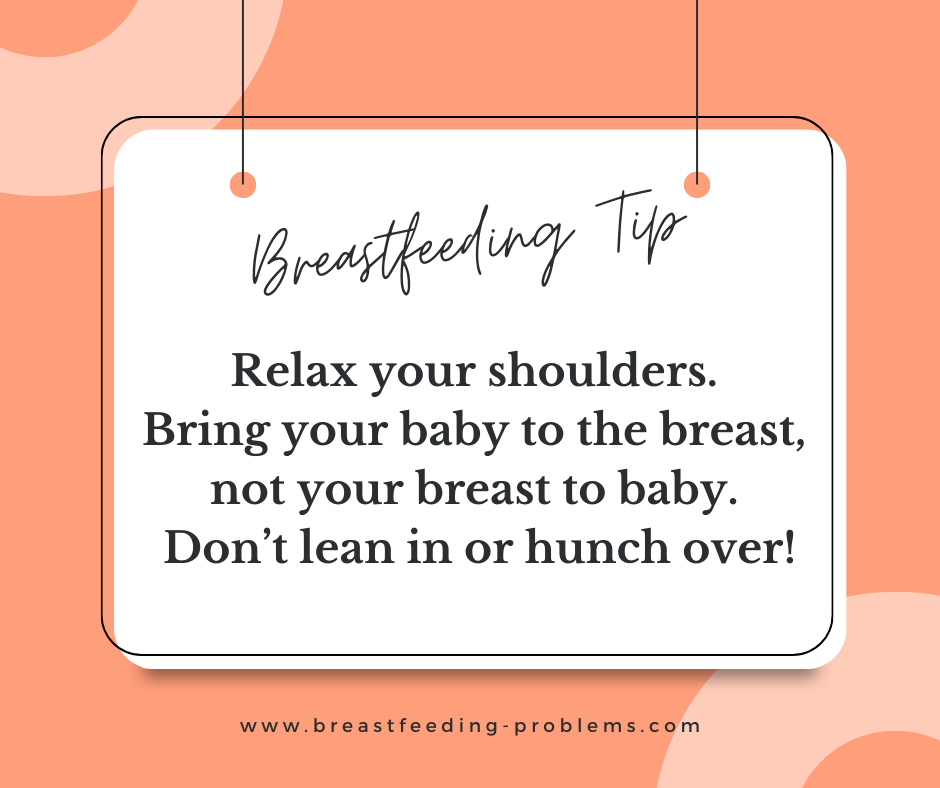Breastfeeding With Small Breasts
The ability to breastfeed is not determined by the size or shape of a woman's breasts; it depends on the presence of breast tissue, specifically the milk-producing cells. This article will delve into the connection between breast size and breastfeeding.

Size Doesn't Matter
Breast Size and Milk Production
Contrary to common misconceptions, breast size does not indicate a woman's milk-producing capacity. Regardless of breast size, the essential factor is the presence of breast tissue.
In most cases, larger breasts appear as such due to a higher proportion of fatty tissue, while smaller breasts may contain the same percentage of milk-producing cells. However, this varies from person to person.
Mothers with even the flattest chests can breastfeed successfully. Women with smaller breasts often find latching on and positioning easier than those with larger breasts.

Considerations for Small-Breasted Women:
The only potential difference for women with smaller breasts is a potentially lower milk storage capacity, meaning they may need to breastfeed more frequently than those with larger breasts.
Techniques like breast compression during feedings can enhance milk flow and efficiency.
The following points are true for all mothers, regardless of breast size:
Milk Supply Tips
Proper Nutrition and Hydration:
To ensure sufficient milk production, it's essential to maintain a balanced diet, including extra calories as needed, and drink plenty of fluids.
Adequate Rest & Stress Management
Relaxing during breastfeeding is not just about physical comfort; it's also about creating a conducive mental and emotional environment. When a mother is relaxed, her body is better able to release Oxytocin, the hormone responsible for milk ejection. So, finding a quiet and comfortable place to breastfeed, with soothing music or dim lighting, can help create a calming atmosphere. Additionally, practicing deep breathing exercises or meditation can be effective in reducing stress during breastfeeding sessions.

When a breastfeeding mother experiences high levels of stress, it can lead to a reduction in milk production and hinder the let-down reflex and the breastfeeding experience.
Mothers can benefit from mindfulness exercises, yoga, or even simply taking short breaks to decompress. Engaging in self-care activities, seeking support from loved ones, and managing time effectively can all contribute to reducing overall stress levels.
Frequent & Exclusive Breastfeeding
Frequent breastfeeding is a cornerstone of successful breastfeeding for mothers and their babies. The concept revolves around the principle of supply and demand. When a baby breastfeeds often, it sends signals to the mother's body to produce more milk. This ensures that the mother's milk supply matches the baby's growing needs. Early feedings are crucial, as they allow the baby to benefit from colostrum, a nutrient-rich, antibody-packed form of milk. Additionally, nighttime feedings are essential, as the hormone responsible for milk production, prolactin, tends to be at its peak during these hours. When mothers need to be separated from their babies for any reason, pumping between feedings can help stimulate milk production, and the expressed milk can be stored for later use. Cluster feeding, where a baby feeds very frequently during short periods, is another natural way to stimulate milk production, especially during growth spurts.
When an infant breastfeeds exclusively, it sends a strong signal to the mother's body to produce enough milk to satisfy the baby's growing appetite. Introducing other fluids or foods too early can lead to a decreased demand for breast milk and potentially hinder milk production. Breast milk is highly adaptable and provides the ideal balance of nutrients for a growing baby, ensuring optimal growth and development.
Exclusive breastfeeding also offers a range of health advantages. Breast milk contains antibodies and other immune-boosting components that help protect the baby from infections and illnesses.

Skin-to-skin Contact
Skin-to-skin contact plays a key role in initiating breastfeeding. Immediately after birth, placing the baby skin-to-skin with the mother facilitates the infant's natural instinct to seek out the breast and latch on. This early contact ensures a smoother start to breastfeeding, establishing a strong bond between mother and baby.
Beyond breastfeeding initiation, skin-to-skin contact offers vital benefits such as temperature regulation. Newborns struggle to maintain their body temperature, and the warmth provided by direct skin-to-skin contact helps stabilize their temperature, preserving energy that can be redirected toward feeding and growth.

Breast Massage and Natural Herbs:
Breast massage can increase milk production and promote healthy lymph drainage. Some mothers may consider using natural herbs to boost milk supply if necessary.
Ensuring Baby Gets Enough Breast Milk:
Knowing whether your baby is getting enough milk is a common concern for all breastfeeding mothers.
Nursing Frequency: Babies should be nursed at least eight times within a 24-hour period to receive sufficient nourishment.
Weight Gain: Your baby should continue to gain weight according to age-appropriate guidelines.
Baby's Happiness: A content and satisfied baby is a good indicator that they are receiving enough milk.
Stool and Urine Output: Babies should produce an appropriate amount of stool and urine based on their age.
If, despite attempting the mentioned strategies, you continue to face challenges with low milk supply, it is advisable to reach out to a lactation consultant in your vicinity for professional guidance and support.

The Tushbaby Hip Carrier
With its ergonomic design and comfortable waistband, Tushbaby provides optimal support for you and your baby. Say goodbye to shoulder and back pain from traditional carriers, as Tushbaby evenly distributes your baby's weight, relieving strain and promoting better posture.
Conclusion
Small breast size should never deter mothers from breastfeeding. Understanding that breast tissue, not size, is key to milk production can alleviate concerns. Regardless of breast size, successful breastfeeding depends on factors such as nutrition, frequent feeding, stress management, and proper care, ensuring both the mother and baby enjoy a rewarding breastfeeding journey.
